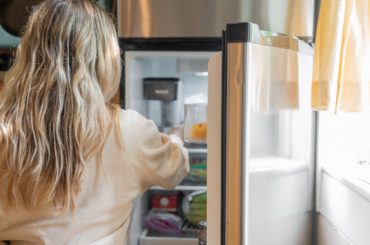Attention Deficit-Hyperactivity Disorder (ADHD) has been a well-known health issue for children for a number of years. Methods of diagnosis and treatment have changed greatly since the 1970s, but the American Academy of Pediatrics (AAP) updated their guidelines just last week. The most recent update prior to this was in 2011.
The changes to treatment guidelines weren’t as sweeping as some had hoped.
The AAP’s updates focus mainly on the criteria for diagnosis, and the need for continuous monitoring and care. However, the treatment guidelines are largely unchanged. For children aged 6 and older, doctors “should prescribe US Food and Drug Administration (FDA)–approved medications for ADHD, along with PTBM (parent training in behavior management) and/or behavioral classroom intervention.” Kids under 6 years old should start with behavior therapy prior to trying meds.
According to NPR, parents have come forward to express concern over the medical community’s rush to prescribe medications that they fear will dull or otherwise alter their child’s personality. Similarly, many experts and physicians were disappointed that the AAP didn’t emphasize the role of behavior therapy more as a first step. They cite promising results from various studies that suggest therapy can be effective, while avoiding the side effects some medications cause.
In 2016, a study published in the Journal of Clinical Child & Adolescent Psychology was conducted on the success of different sequencing of treatments for ADHD. The study found that “beginning treatment with behavioral intervention produced better outcomes overall than beginning treatment with medication.” The families who tried behavioral intervention first not only experienced better results, but had better attendance at therapeutic sessions.
With a continued emphasis on medication and therapy from the AAP, some are wondering which is more important? Which methodology should come first?
ParentsTogether talked to some families affected by these changes.
Michelle, who has a son with ADHD, says, “We tried therapy when my son was first diagnosed. I don’t know if it did much good. Without the meds, I’m not sure much of what the therapist said sank in.”
The thought of medication as a solution to troubling behaviors is undoubtedly appealing to some families who are watching their child struggle. Michelle adds, “Once my son was on a med that worked for him, he didn’t seem to need therapy. He’s been on meds for years—they’re very effective for him. He’s happy and well-adjusted.”
Having two children with ADHD has given another mom a unique perspective. Anna, a mother of two boys with ADHD, offers, “We tried behavioral intervention through the school as well as OT [occupational therapy] for my oldest. He made great progress, but medication is what helped everything really click into place for him.” For her youngest though, things were much different. “We started my youngest on medication as soon as he was diagnosed,” Anna explains. “While it helped in so many ways, the side effects were not tolerable. He is now unmedicated with a few behavioral modifications at school. He is also doing well.”
Ideally, treatment decisions should be personalized to each child, and agreed upon by all involved.
Ultimately, ADHD does not have a one-size-fits-all treatment plan. Experts may debate over what’s most important, but parents need to do what is best for their families. Whether medication or therapy comes first, a happy child is the best end result.
Although their children’s stories are unique, both moms we talked to for this story reported the same thing: They found what worked for their children and their families and everyone was happier for it.
And when it comes down to it, the AAP agrees. “We know that a child diagnosed with ADHD will benefit most when there is a partnership between families, their doctors, and their teachers, who may need to create special instructional plans and support,” said Joseph F. Hagan, Jr., MD, FAAP. Dr. Hagan co-authored the new AAP guidelines and serves as vice chairperson for the AAP Subcommittee on Children and Adolescents with Attention Deficit/Hyperactivity Disorder.







